Stay safe in your NC backyard: Keep copperheads & other snakes out with these expert tips
Three quick things:
During the summer, NC residents should be aware of copperheads in their yards. Regular maintenance, such as regular lawn maintenance and removing yard debris, can minimize snake habitats and reduce the likelihood of encounters.
Creating vibrations by using a leaf blower or another piece of machinery, for instance, does not guarantee snake deterrence, as they primarily respond to ground vibrations. If you see a snake, you can spray its tail with water to prompt it to move off.
Snake bite incidents often occur when people attempt to handle or kill them. It’s crucial to give space to any encountered snakes, especially copperheads.
North Carolinians know summertime means snakes. We can easily spot them along walking trails, in our backyards and even on the sidewalk as they catch some rays.
Longtimers also know a common way to get bitten is to not see where you’re stepping, or to stick your hand somewhere you can’t fully see, like into a pile of weeds or a bush.
We especially need to look out for copperheads, our region’s most abundant venomous snake. These guys love natural crevices and leaf litter-type ground coverings to shelter in.
So we wondered: Could we preemptively get snakes off our properties? Is there anything we can do to tell snakes to scram when we’re gearing up for an afternoon of yard work or an hour of fetch on the front lawn?
The News & Observer talked with Falyn Owens, wildlife biologist with the NC Wildlife Resources Commission, for answers.
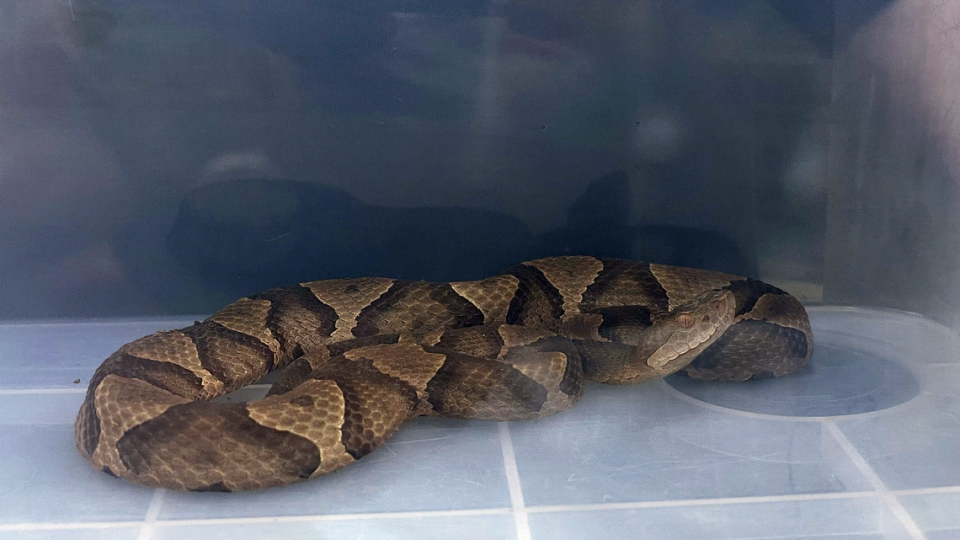
Can you get snakes out of your yard before going outside?
There are ways to minimize snakes on your property, but there isn’t a surefire way to make sure your yard is temporarily cleared, Owens said.
In our region, there’s always a chance of encountering a snake when the temperatures are over 60 F. You’re extra likely to have snakes around if there’s sufficient shelter and food for them.
Where do snakes commonly hide in backyards?
Snakes need places where they can find plenty of food and hide from predators. In a backyard, this may be:
Patches of dense vegetation such as tall/unmown grass, low-growing shrubs or thick ivy.
Piles of wood, brush, rocks or other spots that offer nooks and crannies, attracting snakes and their prey.
To prevent snakes, reduce their habitat. Make sure you’re constantly minimizing overgrown spots where snakes may want to camp out, and clear those unkept piles of yard debris that could be a snake’s shady spot.
“The best way to avoid an unpleasant encounter with a snake is keeping an eye open for them wherever there is suitable habitat, and giving any snake you do encounter plenty of space,” Owens said.
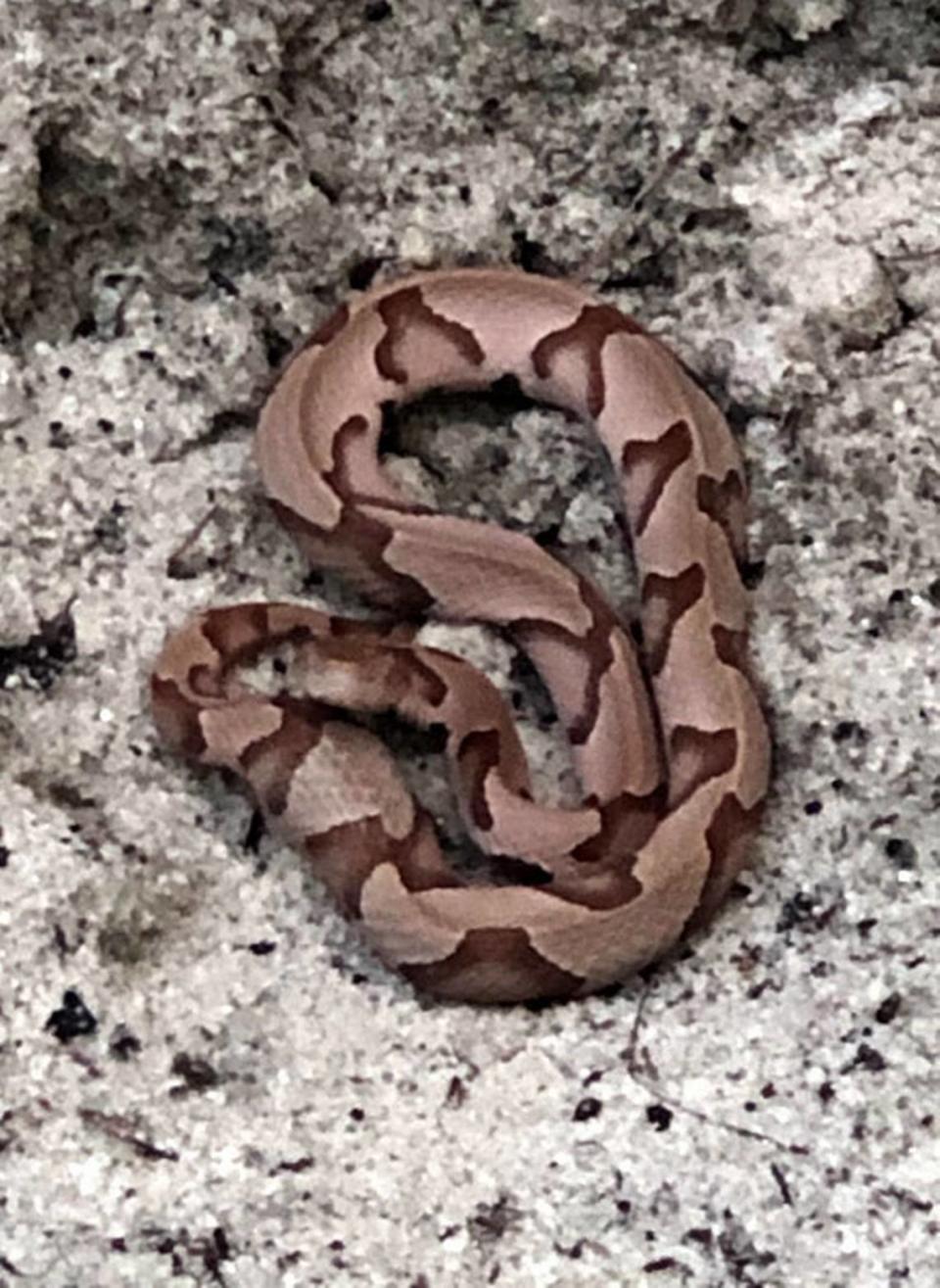
How to remove snakes in NC
If you see a snake and want to coax it along, gently but firmly spray the snake’s tail with a water hose. That’ll prompt it to move out of the way.
Remember to keep your distance, and don’t try to pick up or attempt to kill the snake. That’s one of the most common ways to get bitten, especially by copperheads.
“Rest assured, if you do encounter one, it doesn’t want anything to do with you and just wants to be left alone,” Owens said.
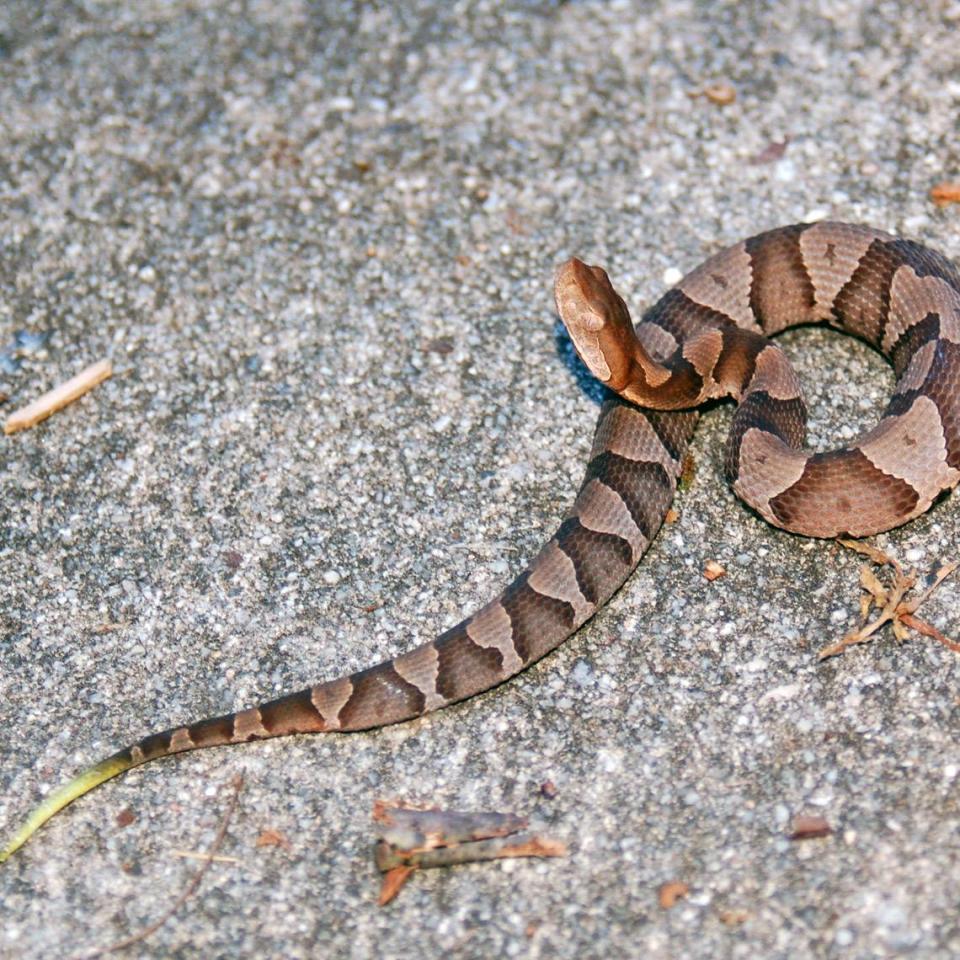
The short version of copperhead best practices include:
Keep a sharp eye open for snakes while outside.
Watch where you step (especially when wearing sandals or flip-flops).
Wear gloves when reaching into weeds, bushes or pine straw.
Keep a much closer watch on nosy dogs who might poke their snouts into spots where copperheads like to rest.
If you see one, leave it alone.
Do vibrations keep snakes away?
Vibrations usually make snakes seek shelter, but that doesn’t mean they’ll slither off your property to get away. They might duck into one of those overgrown patches of yard, or into a pile of leaf litter not too far away.
These vibrations are normally footsteps from a large animal, like humans.
Creating vibrations, such as with a leaf blower or another piece of machinery, won’t really do the trick.
“Snakes don’t have external ears, meaning they can’t really hear sounds carried through the air quite like we can. Snakes ‘hear’ mostly through vibrations in the ground,” Owens said.
“The research is still pretty new on whether snakes in NC can hear airborne sounds at all, so I’d be more confident that the vibrations from my steps on the ground would alert snakes to my presence than any loud airborne sounds would.”
Whether from footsteps or machinery, snakes might be out of sight seeking shelter, but they must end up somewhere.
Remember still to wear your gloves and closed-toe shoes, and make sure you can see where you’re reaching and stepping.
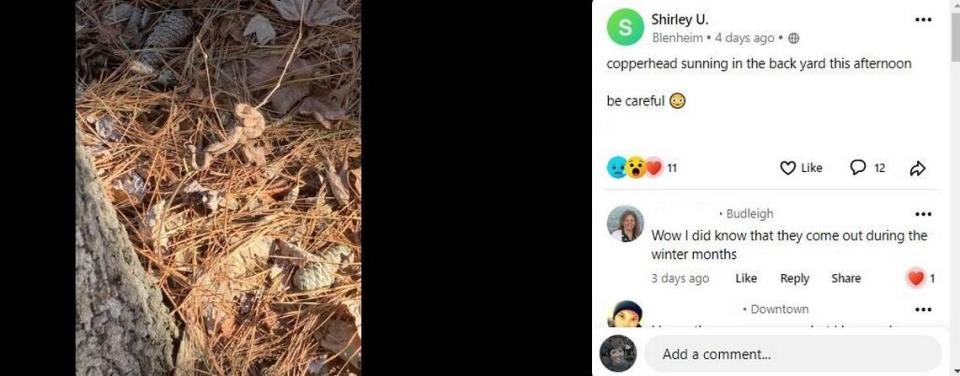
Common snakes to encounter in NC backyards
Most of the snake species commonly seen in the Triangle are harmless, including:
For photos and descriptions, visit herpsofnc.org.
Copperheads are the only venomous snakes common to the Triangle. They only bite out of self-defense, so it’s important to give snakes space so they don’t feel the need to protect themselves.
Again, most snake bites occur when people are trying to handle or kill a snake.
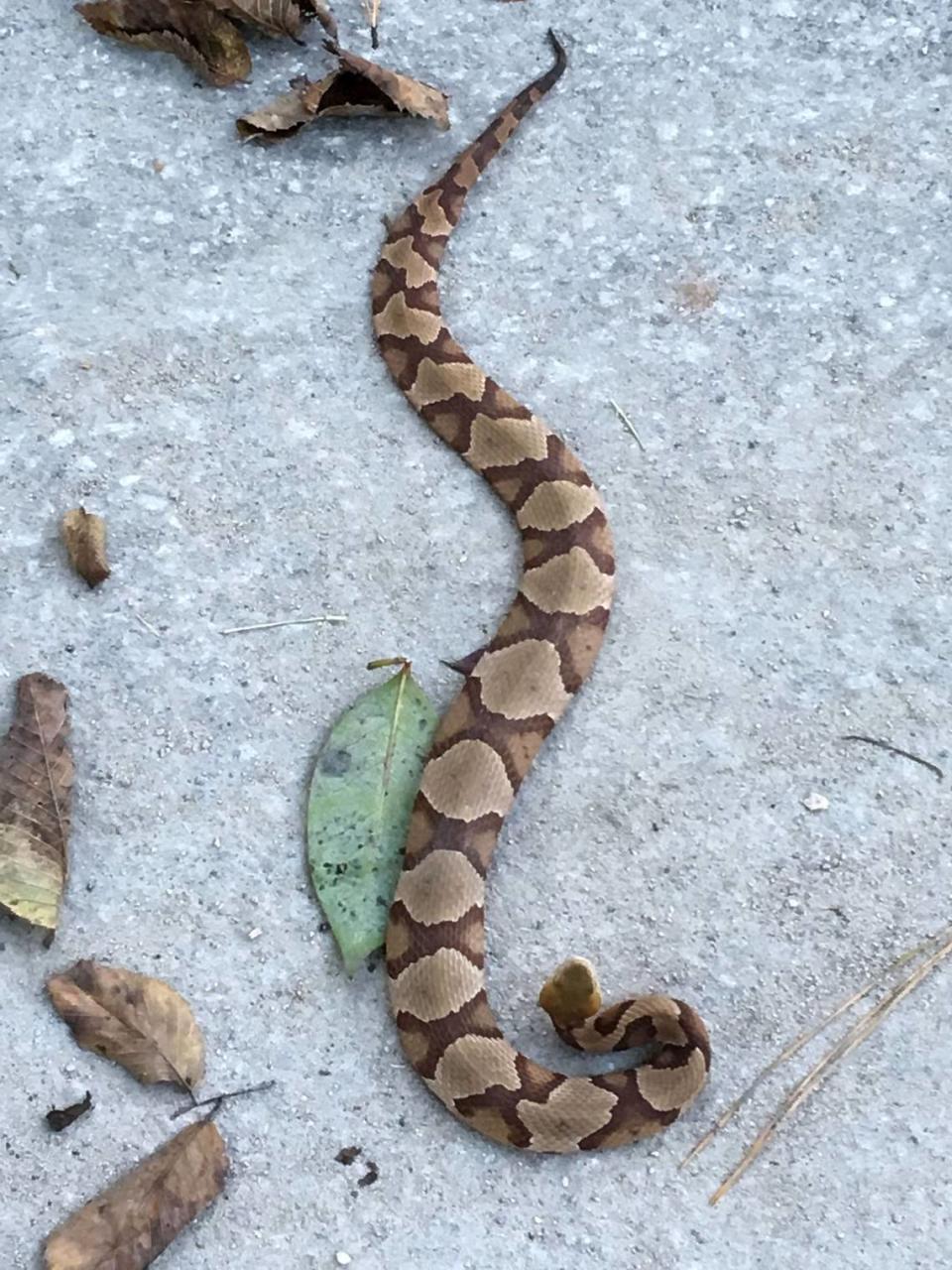
How to identify a copperhead snake
Adult copperheads have the following characteristics:
▪ Pattern: The hourglass-shaped patterns on their backs look like Hershey’s Kisses.
It can be tricky to rely just on markings, especially if you haven’t seen many copperheads in person or you only caught a quick glimpse of it.
“There can be a lot of variation in color and pattern with flecks and specks between the kisses,” said Talena Chavis, certified wildlife relocation expert and owner of NC Snake Catcher in Cary.
▪ Color: Copperheads are brownish-gray. They easily camouflage within dry leaves and wood debris.
Newborn or very young copperheads have the same color and pattern as adults, but their brightly tipped tails make them stand out.
“It has a light brown, coppery or tan (sometimes grayish or pinkish tan) background color, with strongly contrasting chestnut brown crossbands shaped like an hourglass or dumbbell,” the Wildlife Resources Commission says.
▪ Length: Adult copperheads can grow to about three feet long.
For a detailed look at the copperhead snake, visit newsobserver.com/news or ncwildlife.org.
The three bullet points at the top of the article were created using an AI tool for summarization and edited by journalists. Read more on our AI policy here.
Could NC’s cicada season make us see more copperheads? Here’s what wildlife experts say
National Audubon Society’s local chapter changes name after membership vote. Here’s why


